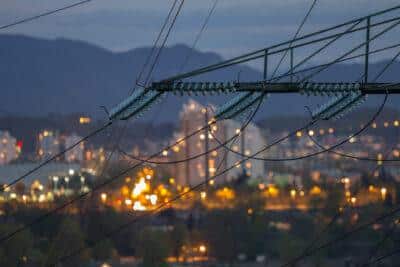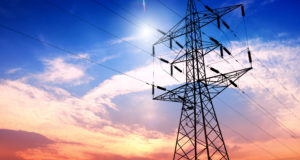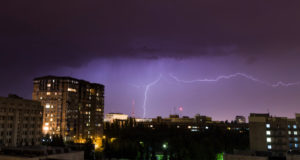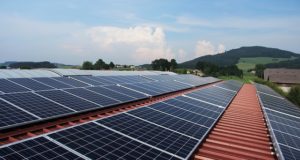America’s power plants and the power grid is still vulnerable despite President Trump’s new efforts to shore it up. Households without sources of backup electricity might find themselves in the dark this summer in some regions of the U.S.
“Impending retirements of fuel-secure power facilities are leading a rapid depletion of a critical part of our nation’s energy mix, and impacting the resilience of our power grid,” a Trump administration announcement stated. “Fuel secure” is how the administration describes coal and nuclear power plants that are being retired.
One coal-fired power plant has closed every 15 days since Trump was elected, Forbes contributor Silvio Marcacci estimated. Most of those plants closed because they were more expensive than natural gas burning plants.
Texas alone has lost 4.5 Gigawatts (4.5 billion watts) of electric generation in the past few years. That according to electric industry expert Terry Jarrett. Jarrett, a previous member of the Missouri Public Service Commission, is worried America is not producing enough electricity.
California might face a natural gas shortage that will lead to blackouts this summer. The American Electric Reliability Corporation (NERC) is predicting a hot weather-induced power shortage. Aliso Canyon, the critical natural gas storage facility outside Los Angeles has been down because of an accident in 2016. Summer power shortages and blackouts are also predicted for Texas.
Power Plants Using Coal Can Help
“Without the resilience of coal plants… the eastern United States would have suffered severe electricity shortages, likely leading to widespread blackouts,” a U.S. Department of Energy study found. Coal-burning power plants still account for around 55% of America’s electric generation.
The Klein Center for Energy Policy reported that 531 coal-burning power plants were retired between 2007 and 2016. These plants generated 55.6 gigawatts of electricity. Many of these facilities have closed because it’s now cheaper for utilities to burn natural gas than coal.
A coal-burning power plant requires a railroad connection, and a large staff of workers with heavy equipment to move coal around. Natural gas burning facilities need only a connection to a pipeline. Further, inflation-adjusted prices for natural gas have been the lowest in history because fracking is producing gas that is easily recovered and relatively abundant.
Nor is it just coal-burning power plants that are closing. Many of America’s nuclear power plants are also shutting down. (Nuclear power plants produce around 20% of the nation’s electricity) Most of the nuclear plants are more than 40 years old and cost much more to operate than natural gas burning facilities.
Even though burning natural gas is currently less expensive, low-cost supplies of natural gas have not been historically available. The Midwest and New England regions suffered natural shortages because of low pipeline capacity last year, Jarrett pointed out. Renewable energy sources are available, but building a large industrial country’s infrastructure on wind and sun still lack economic viability.
Trump’s Plan to Prevent Blackouts
The Energy Department has a new plan to help coal and nuclear power plants. A short-term “lifeline” is being proposed by directing other utilities to buy electricity from them, Bloomberg reported.
The President, according to Federal Law, has the power to order utilities to buy electricity from individual plants. The current plan, which is only a stop-gap matter, has yet to be signed by President Trump.
The Strategic Electric Generation Reserve plan is supposed to prevent stress on the power grid and blackouts caused by weather, cyber attacks and other unforeseen circumstances. There is no guarantee Trump will sign the plan.
Even if the president signs it, the plan is only a stopgap measure because the older power plants will have to be retired at some point. A future president can easily override Trump’s action with a simple executive order, and Congress can always repeal the legislation giving the president the power to intervene in the energy markets.
The bottom line is that America might not be capable of generating enough electricity to keep the grid online at all times. That means many households and businesses will need to be able to produce their own electricity or at least have a backup system available. Often Powerful Living has a few “scratch and dent” solar generators that are new but can’t be sold as new. Interested readers could email Jared at: [email protected] to see what is available at this time.
If your income depends on a steady supply of electricity you need to put in a backup system now – because the grid is vulnerable. Updating and hardening the power grid is a massive undertaking because the problem is a systemic one. Despite President Trump’s recent intentions, it is doubtful that these issues will be solved in the immediate future. Having an off-grid source of electricity might be the only sure way to operate your business and preserve your lifestyle.
You may also want to read: Gov’t Report Warns: Power Grid In ‘Imminent Danger’ Of Cyberattack Impacting ‘Millions’
Or download our free report: How To Cut Your Electrical Bill In Half
Do you think President Trump can shore up the power grid? Please let us know in the comments below.
 Off The Grid News Better Ideas For Off The Grid Living
Off The Grid News Better Ideas For Off The Grid Living





